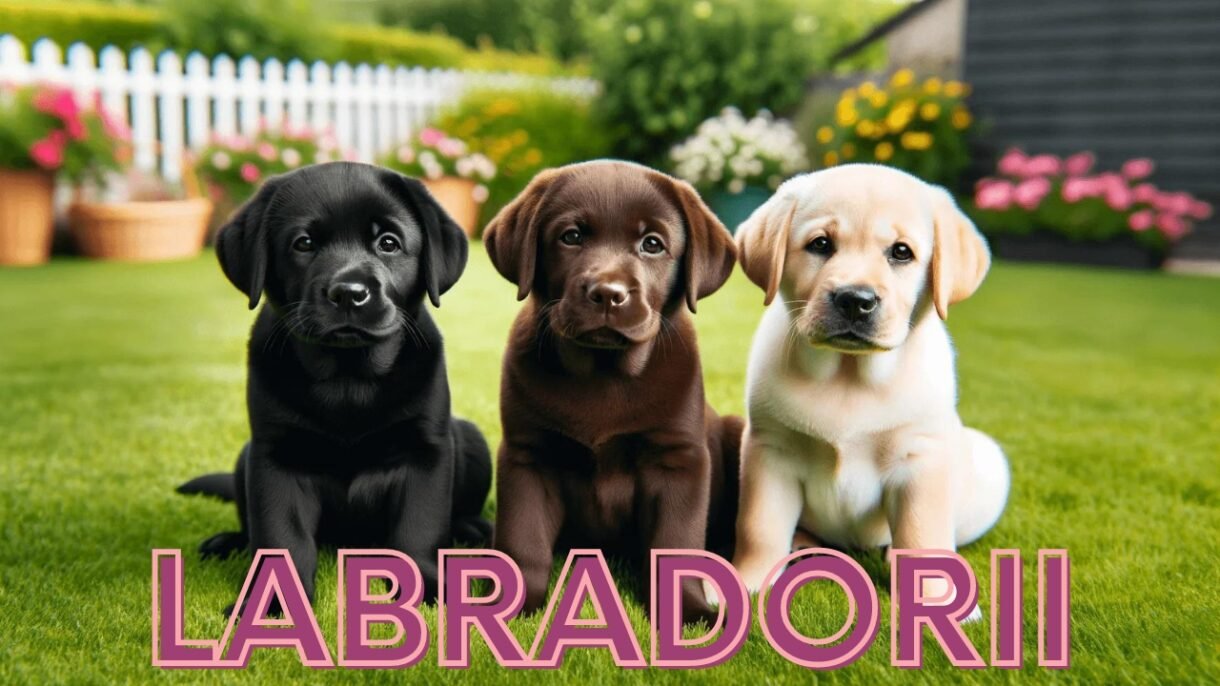Pets
Exploring the Unique World of Sphynx Cat Ownership

If feline elegance had a poster child, the Sphynx cat would be it. Known for their distinctive hairless appearance and endearing personalities, Sphynx cats have garnered a devoted following among cat enthusiasts and pet lovers alike. However, this unique breed’s allure is often accompanied by a hefty price tag. In this comprehensive discussion, we’ll explore the various factors influencing Sphynx cat prices, uncover what you get for your investment, and understand the long-term costs you need to consider before welcoming one into your home.
A Glimpse at the Sphynx Cat Breed
Before we jump into in-depth financial discussions, it’s important to understand what makes the Sphynx cat so special. Contrary to popular belief, Sphynx cats are not completely hairless; they have a very short, fine coat that is often described as feeling like suede. Their large ears, striking eyes, and energetic personality are just a few of the trait’s enthusiasts find irresistible. They are known for their affectionate nature and are often found perched on their human’s lap, looking for attention and warmth. Despite the initial somewhat shocking appearance, Sphynx cats are endearing and can make an excellent addition to the right home.
The Sphynx Cat Price Breakdown
The initial cost of a Sphynx cat varies greatly and can range from a few hundred dollars to several thousand. The range reflects a variety of factors that influence the price. These can include:
Lineage and Pedigree
The lineage of the Sphynx cat can significantly affect its price. Cats that come from a long line of show cats or champions may be more expensive due to their desirable genetic traits and the costs associated with breeding and exhibiting these lines.
Breeder Reputation
Reputable breeders who adhere to high standards of care and ethical breeding practices may charge more for their kittens. This higher price reflects the quality of the animal’s living conditions, veterinary care, and the breeder’s investment in the breed.
Geographical Location
Sphynx cat prices can vary by location. Cats living in areas with high demand but few breeders may cost more due to market conditions. Conversely, in areas with a larger supply of Sphynx cats, prices may be more competitive.
Color and Eye Color
Sphynx cats come in a wide array of colors, and certain rare or unique colors may fetch a premium. Similarly, cats with striking eye colors like vibrant blue or odd-eyed varieties can be more expensive.
Age
Kittens are often more costly than adult cats as they are in higher demand. However, older cats may be available at a lower price and can be a great option for someone seeking an adult companion.
Sex
Typically, female Sphynx kittens are sold for a higher price due to the added value of their potential for breeding.
Health and Genetics
Sphynx cats are prone to certain genetic conditions, such as hypertrophic cardiomyopathy (HCM) and other inherited heart diseases. Reputable breeders screen for these conditions and the cost of these health checks may be factored into the price.
By understanding these cost-driving factors, potential Sphynx cat owners can better anticipate and evaluate what a breeder’s price reflects.
Understanding What You Get for the Price
When you purchase a Sphynx cat from a breeder, you are not just getting a pet; you are investing in a companion with certain guarantees and considerations. Typically, this package includes:
Initial Vaccinations
Your kitten will likely have its initial round of vaccinations, which is a significant cost that’s included in the purchase price. These vaccines protect the cat from common feline diseases.
Health Checks
A reputable breeder will have a health certificate from a veterinarian stating that the kitten has been checked and is in good health at the time of purchase.
Spaying or Neutering
Many breeders sell kittens with a spay or neuter agreement, meaning they must be fixed by a certain age. This is an essential part of responsible pet ownership and can save you hundreds of dollars.
Microchipping
Some breeders may include microchipping as a part of the package, ensuring that if your cat should get lost, there is an increased chance that it finds its way back home.
Support and Advice
You get access to the breeder’s knowledge of the breed, offering invaluable advice on care, feeding, and medical concerns.
Starter Kit
Some breeders provide a starter pack with food, a blanket with the scent of the litter, and toys to help your new Sphynx cat transition to its new home.
This initial investment may seem substantial, but it reflects the breeder’s care and efforts to ensure you’re starting your relationship with your new pet on solid ground.
Hidden Costs and Ongoing Expenses
The purchase price of a Sphynx cat is only the beginning of what can be a long and fulfilling financial commitment. Potential hidden costs and ongoing expenses include:
Grooming
Despite their lack of fur, Sphynx cats require regular grooming. Their exposed skin accumulates oils and dirt that need to be cleaned, and their large ears must be inspected and cleaned, which can require specialized products.
Diet
Sphynx cats are active and have a high metabolism, requiring a premium diet to help maintain their energy levels and skin health. Quality cat food can be more expensive than generic brands.
Insurance
Purchasing pet insurance can be a wise move, helping you manage unexpected medical expenses. Insurance costs vary depending on the level of coverage and the cat’s age.
Veterinary Care
In addition to routine check-ups, Sphynx cats may require more veterinary care than other breeds due to their predisposition to certain health issues.
Accessories and Toys
To keep your Sphynx cat healthy, happy, and stimulated, you’ll need to invest in cat trees, toys, and other stimulants.
Boarding or Caregiving
When you travel, you will need to make arrangements for the care of your Sphynx cat, which can incur additional expenses.
By budgeting for these potential costs, you can ensure that owning a Sphynx cat is a sustainable and enjoyable part of your lifestyle.
Tips for Finding a Reputable Sphynx Cat Breeder
The key to finding a well-priced Sphynx cat is to find a reputable breeder. Here’s how to identify them:
Look for Red Flags
Avoid breeders who are unwilling to show you where their cats live or who won’t allow you to meet the kittens or their parents. Trustworthy breeders are proud of their operation and are transparent about their breeding practices.
Ask for References
Seek recommendations from other Sphynx owners or from breed clubs. Positive testimonials are a good sign that the breeder is reputable.
Inquire About Genetic Testing
Reputable breeders test their breeding cats for known health issues. Make sure your breeder can provide you with the results of these tests.
Check Their Registrations
Breeders should be registered with a recognized cat registry like TICA or CFA. These organizations have strict guidelines that breeders must follow.
Interview the Breeder
A quality breeder will ask you as many questions as you ask them. Be prepared to answer inquiries about your living situation, family, and experience with pets.
Remember, taking the time to find a trustworthy breeder can save you money and heartache in the long run.
Considering Adoption: The Cost-Effective Option
Adopting a Sphynx cat is a cost-effective alternative to buying one from a breeder. The cost of adoption is significantly lower than buying from a breeder and usually includes spaying or neutering, initial vaccinations, and sometimes microchipping. More importantly, adoption fees contribute to the rescue organization’s efforts to save more cats in need.
Shelter and Rescue Organizations
Many cats, including Sphynxes, find themselves in need of a loving home. By adopting from a shelter or rescue organization, you can give a cat a second chance and save money on the initial costs of ownership.
Benefits of Adoption
Adopted cats often come with the added benefit of being socialized and litter-trained, saving you the time and effort of these early steps. Additionally, shelters sometimes offer discounted or included services like initial health checks and spaying or neutering, making adoption a very cost-effective way to bring a Sphynx cat into your life.
Ethical Considerations
Adoption is a great way to ensure that you are providing a home for a cat in need, supporting the need to rehome pets and reduce the homeless pet population.
You May Also Like: Raising a Happy Labradorii: Tips on Nutrition, Exercise, and Grooming
Conclusion
The allure of owning a Sphynx cat is undeniable. These elegant and affectionate companions offer a unique experience for those willing to invest in the breed. Understanding the costs and responsibilities associated with Sphynx cat ownership is crucial for making an informed decision. Whether you choose to purchase a kitten from a reputable breeder or to adopt, the financial aspect is just one piece of the puzzle. The lifelong joy and fulfillment that a Sphynx cat can bring to your home is an investment in moments that money can’t buy.
FAQs
How much does it typically cost to purchase a Sphynx cat?
The initial purchase price of a Sphynx cat from a reputable breeder can vary significantly but generally ranges between $1,500 and $3,000. This cost reflects the breeder’s efforts in providing a healthy and well-socialized kitten, including vaccinations, genetic testing, and a starter kit.
Are Sphynx cats high maintenance?
Yes, Sphynx cats require regular grooming despite their lack of fur. Their skin accumulates oils that need to be cleaned regularly to prevent skin issues. Additionally, their ears and nails also require frequent cleaning and maintenance.
What are the common health issues in Sphynx cats?
Sphynx cats may be predisposed to certain health issues, including skin conditions like dermatitis, heart disease such as hypertrophic cardiomyopathy, and digestive problems. Regular veterinary check-ups can help manage and prevent some of these concerns.
Do Sphynx cats require a special diet?
Sphynx cats have a high metabolism and are quite active, necessitating a high-quality diet to maintain their energy levels and overall health. It’s recommended to feed them premium cat food that meets their specific nutritional needs.
Is it better to adopt or purchase a Sphynx cat from a breeder?
Adopting a Sphynx cat can be a cost-effective and ethically rewarding option, as it gives a home to a cat in need and generally includes the cost of spaying/neutering and initial vaccinations. However, purchasing from a reputable breeder ensures the kitten’s health status and breed authenticity. The choice depends on personal preferences and considerations about cost, health, and ethical considerations.
Pets
What the Heckin Dog: A Comprehensive Guide

On forums and other media, the expression “What the Heckin Dog” is becoming more and more common. It’s a lighthearted term frequently employed to characterize the peculiar and endearing actions of dogs. We shall delve into the history, definitions, and diverse settings in which this expression is employed in this piece. We’ll also discuss why it speaks to so many people and how it represents our relationship with dogs.
Introduction to “What the Heckin Dog”
Dogs have always been a beloved part of human life. They are our companions, protectors, and often, a source of endless entertainment. The internet has amplified our love for dogs, giving rise to numerous memes and viral content. One such trend is the use of the phrase “What the Heckin Dog.” This phrase captures the humorous and affectionate bewilderment we feel towards dogs’ antics.
What Does “What the Heckin Dog” Mean?
The phrase “What the Heckin Dog” is a playful exclamation used when a dog does something unexpected, funny, or cute. It’s a way of expressing surprise and amusement at a dog’s behavior, often with a sense of endearment. This phrase is part of a broader internet culture that personifies animals and attributes them with human-like thoughts and emotions.
Origins of the Phrase
The exact origins of “What the Heckin Dog” are difficult to pinpoint, but it is part of a larger trend in internet slang. It draws from a style of language popularized on platforms like Reddit, Tumblr, and Twitter, where users often create humorous and exaggerated dialogues for animals.
Early Internet Culture and Animal Memes
Animal memes have been a staple of internet culture since its early days. Websites like “I Can Has Cheezburger?” popularized the trend of captioning animal photos with humorous text. These captions often used a form of broken English and playful misspellings, which have become a hallmark of animal memes.
The Evolution of DoggoLingo
DoggoLingo is a playful internet language used to describe dog behaviors and characteristics. It includes terms like “doggo,” “pupper,” “bork,” “floof,” and “heckin.” “What the Heckin Dog” fits perfectly into this lexicon. DoggoLingo reflects our tendency to anthropomorphize dogs and treat them as if they were children or close friends.
Common Uses and Contexts
Understanding the various contexts in which “What the Heckin Dog” is used can help us appreciate its charm and appeal. Here are some common scenarios:
Funny and Unexpected Behaviors
Dogs often do things that seem inexplicable to us. They might suddenly start chasing their tails, bark at inanimate objects, or make hilarious facial expressions. When these moments are captured on camera, “What the Heckin Dog” is a perfect caption.
Cute and Endearing Moments
Beyond the funny moments, dogs also do things that melt our hearts. Whether it’s a puppy’s first attempt at climbing stairs or an older dog cuddling with its favorite toy, these moments evoke a strong emotional response. “What the Heckin Dog” can express the mix of surprise and affection we feel.
Social Media and Memes
Social media platforms like Instagram, TikTok, and Twitter are full of dog content. Users often share photos and videos of their pets with captions like “What the Heckin Dog” to engage their followers and contribute to the trend. These posts often go viral, spreading the phrase even further.
Why We Love “What the Heckin Dog”
The popularity of “What the Heckin Dog” is no accident. Several factors contribute to its widespread appeal:
Relatability
Anyone who has spent time with dogs knows how unpredictable they can be. The phrase “What the Heckin Dog” resonates because it captures the universal experience of being amused and bewildered by a dog’s actions.
Emotional Connection
Dogs are more than just pets; they are family members. The affectionate tone of “What the Heckin Dog” reflects the deep emotional bond we share with our canine companions. It’s a way of expressing love and amusement simultaneously.
Humor and Joy
In a world that can often be stressful, humorous content about dogs provides a much-needed escape. “What the Heckin Dog” is a lighthearted phrase that brings a smile to people’s faces and reminds them of the simple joys in life.
The Role of Dogs in Our Lives
To fully appreciate the phrase “What the Heckin Dog,” it’s important to understand the significant role dogs play in human society.
Companionship and Loyalty
Dogs have been our companions for thousands of years. They offer unconditional love and loyalty, making them invaluable members of many households. The bond between humans and dogs is built on mutual trust and affection.
Therapeutic Benefits
Numerous studies have shown that dogs can have a positive impact on our mental health. They reduce stress, anxiety, and depression. Therapy dogs are used in various settings, from hospitals to schools, to provide comfort and support.
Enhancing Social Interactions
Dogs also help facilitate social interactions. Dog owners often meet and connect with others while walking their pets. This can lead to the formation of new friendships and social networks.
Popular Memes and Viral Content
The phrase “What the Heckin Dog” has inspired a plethora of memes and viral content. Here are some examples:
Classic Dog Memes
- Dog Shaming: Photos of dogs next to signs detailing their misdeeds with captions like “What the Heckin Dog.”
- Borking Dogs: Videos of dogs barking in funny or unexpected ways.
- Doge: The iconic Shiba Inu meme that uses broken English to express the dog’s thoughts.
Viral Videos
- Zoomies: Videos of dogs running around wildly, often captioned with “What the Heckin Dog” to emphasize their sudden burst of energy.
- Talking Dogs: Edited videos where dogs appear to be speaking, often using phrases from DoggoLingo.
Psychological Benefits of Dog Humor
Humor, especially involving pets, has several psychological benefits:
Stress Relief
Laughing at funny dog content can reduce stress and improve mood. It triggers the release of endorphins, the body’s natural feel-good chemicals.
Emotional Connection
Sharing dog memes and videos can strengthen social bonds. When people find the same content funny, it creates a sense of community and shared experience.
Cognitive Benefits
Humor requires cognitive flexibility, which means it can help improve problem-solving skills and creativity. Engaging with funny dog content can keep the mind sharp and agile.
You May Also Like: mwpfsettlement.com: Real Results with Midwestern Pet Diets
Conclusion
The expression “What the Heckin Dog” is not merely a colloquialism on the internet; it expresses our love and happiness for dogs. Through social media postings, memes, or casual conversations, this lighthearted statement perfectly encapsulates the essence of what makes dogs unique. We may better understand why “What the Heckin Dog” has become a treasured aspect of online culture by knowing its history, applications, and the psychological advantages of dog comedy.
The sheer pleasure of seeing a dog be its silly, cute self serves as a reminder of the beauty in life’s little, unexpected moments in a world where worry and difficulties are commonplace. Thus, the next time your pet does something unexpected, don’t be scared to shout, “What the Heckin Dog!” and to tell everyone about it.
FAQs
What does “What the Heckin Dog” mean?
“What the Heckin Dog” is a playful exclamation used to express surprise, amusement, and affection when a dog does something unexpected, funny, or adorable. It is part of a broader internet slang that personifies dogs and attributes them with human-like thoughts and emotions.
Where did the phrase “What the Heckin Dog” originate?
The exact origins of “What the Heckin Dog” are hard to pinpoint, but it emerged from internet culture, particularly from social media platforms like Reddit, Tumblr, and Twitter. It is closely related to DoggoLingo, a playful internet language used to describe dog behaviors and characteristics.
Why is “What the Heckin Dog” so popular?
The phrase resonates with many people because it captures the universal experience of being amused and bewildered by a dog’s antics. Its popularity is also driven by the emotional connection people have with their pets and the humor that dog content provides. It is frequently used in memes, social media posts, and viral videos.
How is “What the Heckin Dog” used in social media?
On social media, “What the Heckin Dog” is often used as a caption for photos and videos of dogs doing funny or cute things. Users share these posts to engage their followers, contribute to the trend, and spread joy. It is common on platforms like Instagram, TikTok, and Twitter.
What are the psychological benefits of dog humor?
Dog humor, including phrases like “What the Heckin Dog,” offers several psychological benefits. It can reduce stress, improve mood by triggering the release of endorphins, and strengthen social bonds through shared laughter. Engaging with funny dog content also promotes cognitive flexibility, which can enhance problem-solving skills and creativity.
Pets
mwpfsettlement.com: Real Results with Midwestern Pet Diets

In the bustling world of pet supplies, one brand that’s been gaining significant traction is Midwestern Pet Foods. With a website like mwpfsettlement.com, Midwestern is not just a provider of pet nutrition but also a companion in your pet’s well-being. Pet owners today are more cognizant than ever about the need for high-quality nutrition for their beloved animals. This blog post aims to be your comprehensive guide in navigating through the realm of Midwestern Pet Foods. We’ll traverse the history of this popular brand, understand the profound impact of quality nutrition on your pet’s health, dissect the products that have made Midwestern a household name, analyze how they stack up against competitors, and bring forth real stories from those who’ve entrusted their pet’s diet to Midwestern. Join us as we unveil the story behind Mwpfsettlement.com and the brand it represents.
Introduction to Midwestern Pet Foods: A Brief History and Mission
Midwestern Pet Foods started with a vision to offer high-quality pet food at a reasonable cost to consumers. Founded in 1926, the company has a deep-rooted commitment to providing essential nutrition that fosters the health and happiness of pets. What began as a small business operation in Evansville, Indiana, has blossomed into a significant contributor to the pet food industry across the United States and worldwide.
Driven by a strong ethos that pets are family, Midwestern Pet Foods has built a legacy on trust, integrity, and a pioneering spirit. Their dedication to the welfare of animals goes beyond profits, interweaving ethical and sustainability principles into the business fabric. The brand’s mission is palpable not just through the products they ideate and produce, but also through the transparent engagement they uphold with their community of pet lovers.
The Importance of Quality Nutrition for Pets: Understanding the Impact on Health
The adage ‘You are what you eat’ extends to our furry companions as well. A pet’s overall health and well-being hinge largely on the quality of their diet, which directly affects their longevity and resistance to disease. Nutrient-rich diets are crucial for maintaining healthy skin and coat, supporting digestive health, enhancing immunity, and ensuring a pet’s cognitive and joint health.
Midwestern Pet Foods understands these imperatives and formulates their products with meticulous care. Their emphasis on natural ingredients, the right balance of proteins, fats, carbohydrates, and essential nutrients, and the exclusion of artificial by-products resonates well with pet owners who prioritize health. A commitment to quality nutrition means choosing a diet that mimics what your pet’s ancestors would have consumed and avoiding additives that have no place in their evolutionary diet.
A Detailed Look at Midwestern’s Product Line: Quality, Ingredients, and Special Features
Midwestern Pet Foods has an extensive product line designed to cater to the unique nutritional needs of pets at different stages of life and with varying activity levels. Their offerings range from grain-free recipes for sensitive stomachs to breed-specific formulas that consider the distinctive health profile of certain dog breeds.
The brand’s flagship products include Earthborn Holistic, ProPac Ultimates, and Sportmix. Earthborn Holistic is particularly popular among consumers seeking a holistic approach to pet nutrition, with a focus on high-quality proteins, whole grains, and fruits and vegetables. ProPac Ultimates and Sportmix, on the other hand, are favored for their protein-rich diets that promote muscular development and energy for an active lifestyle.
Each product in Midwestern’s portfolio is crafted to meet or exceed the nutritional guidelines set by AAFCO and is manufactured in the United States, a testament to their stringent standards for safety and quality. Customers who have switched to Midwestern Pet Foods often find that their pets’ digestive issues improve, coats become shinier, and energy levels increase, solidifying their trust in the brand.
How Midwestern Pet Foods Stands Out in the Market: Competitive Analysis
In a market teeming with options, Midwestern Pet Foods distinguishes itself through several strategic differentiators. Chief among these is their commitment to sustainable and eco-friendly practices. The brand takes measures to reduce its carbon footprint, such as using alternative energy sources and ensuring their packaging is recyclable.
Midwestern also places a strong emphasis on community involvement and animal welfare. They partner with various organizations to support rescue missions and promote adoption, underlining their holistic approach to animal care. Their engagement with customers is multi-faceted, from educational content on pet nutrition to interactive social media campaigns that foster a strong community spirit.
Additionally, the brand’s transparency regarding their ingredients and manufacturing processes is a significant draw for consumers. Midwestern Pet Foods understands that pet owners today are savvy and seek detailed information about what goes into their pet’s food. Their open policy on sourcing and preparing food instills confidence and builds long-term loyalty.
Real Stories from Satisfied Customers: Testimonials and Reviews
To truly understand the impact of Midwestern Pet Foods, we turn to the words of the customers who have experienced its benefits first-hand. A plethora of positive reviews and testimonials flood the internet, recounting stories of dogs who have enjoyed increased energy and nutritionally dubious eating habits. These anecdotes serve as compelling evidence of the brand’s efficacy in transforming the lives of pets for the better.
Customers appreciate the improvement in their pets’ skin allergies and coat conditions after the transition to Midwestern’s grain-free formulas. Similarly, pet owners with senior dogs have reported enhanced mobility, thanks to the joint-supporting supplements present in the diet. These testimonials paint a picture of a brand that not only meets but exceeds the expectations of its clientele.
Conclusion: Summarizing the Benefits of Choosing Midwestern for Your Pet’s Nutrition
Midwestern Pet Foods has cemented its place in the hearts of pet owners by prioritizing the ideal of ‘health from the inside out.’ This dedication shines through in the brand’s product line, community engagement, and commitment to the environment. Commercially successful but driven by a cause greater than profit, Midwestern is a brand that resonates with those who view their pets not just as companions but as family.
If you haven’t explored their range yet, I encourage you to visit Mwpfsettlement.com, peruse their offerings, and consider the transition to Midwestern Pet Foods. Make an informed choice, and give your pet the gift of a long, healthy, and joyous life.
FAQs
Is Midwestern Pet Foods suitable for all pet breeds and sizes?
Midwestern Pet Foods has a diverse range of products suitable for various breeds and sizes. Their breed-specific formulations take into account the unique needs of different dog types, ensuring that each pet receives targeted nutrition.
Are there any recalls associated with Midwestern Pet Foods?
Like any major pet food brand, Midwestern has had to address product recalls in the past. However, the company’s response to these incidents, their transparency, and their commitment to resolving any issues are commendable. They have consistently worked to improve their quality control processes and maintain the trust of their customer base.
What are the key ingredients to look for in pet food?
When selecting pet food, it’s essential to look for high-quality proteins as the first few ingredients. Fruits, vegetables, and grains should provide a balanced diet with sufficient vitamins and minerals. Avoid foods containing artificial preservatives, flavors, or colors, which serve no nutritional purpose.
Why is natural pet food beneficial?
Natural pet food is made from ingredients that are minimally processed and free from artificial additives. This often results in a diet that is easier for pets to digest and contains higher nutritional content. It’s an ideal option for health-conscious pet owners who want to provide their animals with the best possible diet.
Pets
Raising a Happy Labradorii: Tips on Nutrition, Exercise, and Grooming

If there’s one breed that has captured the hearts of dog lovers around the globe, it’s the Labrador Retriever. Their friendly, energetic, and lovable nature has made them a popular choice for families, working professionals, and anyone in need of a loyal companion. But there’s more to these dogs than just their winning personality. From their history as working dogs to their role as one of the top family pets, Labradors are an interesting and versatile breed. Whether you’re considering adding a Labrador to your family or you already have one at home, this in-depth guide will provide you with all the information you need to understand, care for, and enjoy life with your Labrador.
A Brief History and Origin of Labrador Retrievers
Originally hailing from the cold shores of Newfoundland, Canada, Labrador Retrievers (or simply “Labs”) were bred for their agility and strength. In the early 19th century, St. John’s water dogs, a now-extinct breed, were used by fishermen to help retrieve nets and sea-dwelling creatures from the icy waters.
During the 1800s, these dogs were imported to England and subsequently cross-bred with setters, spaniels, and other types of retrievers. The result was the modern breed we know today, the Labrador Retriever.
Why Labradors Are Popular Family Pets
With their affectionate and gentle nature, Labradors have earned a reputation as excellent family pets. They are known for their patience with children, making them an ideal companion for kids. Their sociable demeanor means they also get along well with other pets, and their intelligence and willingness to please make them relatively easy to train.
Their adaptability is another key factor in their popularity. Whether you live in a city apartment or a country home, Labradors are content as long as they receive the love and attention they crave. Their versatility extends to activities too—with the right training, they can excel at everything from obedience competitions to agility trials.
Labrador Retriever Characteristics
Physical Features and Standard Breed Traits
Labradors are medium to large-sized dogs with a sturdy build. They have a broad head, powerful jaws, and a thick, water-resistant coat. Their otter-like tail is one of their most recognizable features and serves as a rudder when swimming. The breed typically has a short, dense coat that comes in three standard colors—black, yellow, and chocolate.
Labradors are known for their “otter” tails, which are thick at the base and taper toward the end. These are powerful tails that help them maneuver in water, and their strong legs make them excellent swimmers. They are also known for having “webbed” feet, which aid in their aquatic abilities.
Temperament and Ideal Living Conditions
The Labrador Retriever is known for being outgoing, even-tempered, and gentle. They are also very outgoing and friendly. This makes them wonderful companions both at home and in new environments. They thrive on human interaction and don’t do well left alone for long periods.
Their intelligence and high energy levels mean they require mental stimulation and plenty of exercise. While they enjoy relaxing at home with their family, they are also up for adventures and outdoor activities. Labradors are not known to be aggressive, but like all dogs, they need proper training and socialization to prevent any unwanted behaviors.
It’s important to note that Labradors are prone to obesity, so they need to be fed a balanced diet and receive regular exercise to maintain a healthy weight. They are not suited to living in hot climates due to their thick coats, and they can be prone to overheating.
Labrador Care Guide
Nutrition and Feeding Recommendations
Feeding your Labrador a high-quality diet is essential for their health and well-being. Because Labradors tend to be food-motivated, it’s important to monitor their weight and keep them on a feeding schedule to prevent overeating. Meals should be divided into at least two feedings per day to minimize the risk of bloat, a life-threatening condition that can occur in large, deep-chested dogs.
Avoid giving human foods or excessive treats to your Labrador, and instead, provide healthy snacks like carrots or apples. Feeding guidelines on commercial dog food bags can be used as a starting point, but the amount you feed your dog should be adjusted based on their activity level and body condition. Consulting with your veterinarian is recommended to determine the appropriate diet for your Labrador.
Exercise Needs and Training Tips
Labradors are high-energy dogs and require a significant amount of exercise to keep them both physically and mentally fit. Daily walks, playtime, and activities like swimming and retrieving games are perfect ways to burn off their energy. Without adequate exercise, Labradors can become bored and may engage in destructive behaviors.
Training is also important to channel their energy in a positive direction. Start training your Labrador from a young age, using positive reinforcement techniques. They are eager to learn and will respond well to consistency and praise. Obedience training will help them become well-behaved members of your family, and many Labradors also enjoy the challenge of learning tricks or participating in dog sports.
Grooming and Health Care Essentials
Despite their double coat, Labradors are relatively low-maintenance when it comes to grooming. Their short, dense fur only requires a weekly brushing to remove loose hair and prevent matting. Labradors shed year-round, and they will “blow” their coat twice a year, shedding the undercoat completely. During these times, more frequent brushing will help manage the shedding.
Regular grooming also provides an opportunity to check for any skin issues, which Labradors can be prone to. Keeping their ears clean and dry can help prevent ear infections, and their nails should be trimmed regularly to ensure they don’t become overgrown.
Regular check-ups with a veterinarian are essential to monitor your Labrador’s health and to keep their vaccinations up to date. Labradors are prone to some genetic health issues, such as hip dysplasia, elbow dysplasia, and certain eye conditions. Your vet can help you develop a plan to manage any health concerns that may arise.
Labradors as Working Dogs
The Breed’s Role in Hunting, Therapy, and Rescue Operations
Labradors are renowned as one of the most versatile working dog breeds. Their exceptional sense of smell and strong retrieval instincts make them excellent hunting companions. They are adept at flushing out game, retrieving birds, and even tracking wounded quarry.
Their gentle and tolerant nature, alongside their intelligence, also make them highly effective therapy and assistance dogs. Labradors frequently work with individuals with disabilities, as guide dogs for the blind, or in therapeutic settings for children and the elderly. Their keenness to please and their calm demeanor are invaluable traits in these roles.
In rescue operations, Labradors are used for water rescue, avalanche search and rescue, and even in disaster areas to locate survivors. Their inherent desire to retrieve combined with their excellent swimming abilities and physical endurance make them an invaluable asset in these challenging environments.
Living with a Labrador
Advice for First-Time Labrador Owners
For those considering their first Labrador, it’s important to understand the commitment involved. Labradors are a long-lived breed, with a lifespan of 10-12 years on average. They require plenty of interaction, a consistent routine, and a considerable investment of time and energy.
Research the breed, speak with Labrador owners, and consider attending obedience classes to prepare. Secure your home and yard to prevent your Labrador from escaping, and invest in durable toys to satisfy their strong chew drive.
Tips for Integrating a Labrador into a Family with Other Pets
Introducing a Labrador into a household with other pets can be successful with patience and the right approach. Begin by slowly introducing the pets in a neutral environment. Watch their body language and behavior closely. Gradually increase the time the pets spend together, always supervising. Be sure to give all the pets equal attention. If there are significant problems, consult with a professional trainer or behaviorist.
Labradors are generally good with other animals when socialized from an early age. However, keep in mind that each dog is an individual, and some may have a higher prey drive or be more territorial.
Conclusion
Labrador Retrievers are more than just friendly faces; they are versatile companions that have earned their place in the hearts of millions. Whether participating in sports, lending a helping paw, or simply providing unyielding loyalty, the Labrador’s legacy is one of service and love. By understanding their breed traits, caring for their unique needs, and appreciating the joy they bring, Labrador owners can ensure their beloved pets lead happy, healthy lives. Remember, Labradors aren’t just dogs; they are members of the family who ask for little more than your love and affection in return. And with a Labrador at your side, every day is an adventure waiting to happen.
Frequently Asked Questions
How much exercise does a Labrador need daily?
Labradors are high-energy dogs that require a significant amount of exercise to maintain their health and happiness. It is recommended that they get at least one hour of rigorous exercise each day. This can include activities like walking, playing fetch, swimming, and participating in dog sports.
Are Labradors good family pets?
Yes, Labradors are excellent family pets. They are known for their friendly nature, intelligence, and loyalty. Labradors are particularly good with children and get along well with other pets if socialized properly from an early age. Their adaptable and gentle demeanor makes them suitable companions for any household.
What are common health issues in Labrador Retrievers?
Labradors are prone to certain genetic health issues, including hip dysplasia, elbow dysplasia, and eye conditions like progressive retinal atrophy. They can also be predisposed to obesity if their diet and exercise are not properly managed. Regular veterinary check-ups are crucial for early detection and management of these health concerns.
How do I properly groom my Labrador?
Labradors require relatively minimal grooming due to their short, dense fur. Weekly brushing is recommended to remove loose hair and prevent matting, especially during their semi-annual shedding periods. It’s also important to keep their ears clean and dry to avoid infections and regularly trim their nails to prevent discomfort.
Can Labradors be trained as working dogs?
Absolutely. Labradors are highly versatile working dogs, excelling in roles such as hunting, therapy, assistance, and search and rescue operations. Their intelligence, eagerness to please, and strong retrieval instincts make them suitable for a wide range of tasks. With appropriate training, Labradors can perform exceptionally well in various working roles.
-

 Business and Finance9 months ago
Business and Finance9 months agoThe 5 Ways to Boost Your Cash Flow Forecasting Instantly
-

 Blog11 months ago
Blog11 months agoHow It Works Magazine: A Comprehensive Guide
-

 Entertainment8 months ago
Entertainment8 months agoExploring The Grand Duke Is Mine Spoilers: A Comprehensive Guide
-

 Sports8 months ago
Sports8 months agoThe Best Games on Unblocked Games 67
-

 Fashion5 months ago
Fashion5 months agoExploring Áo Thể Thao Thiết Kế: The Pinnacle of Custom Sports Apparel in Vietnam
-

 Food8 months ago
Food8 months agoExploring the Flavorful World of Cassasse: A Culinary Journey
-

 Travel7 months ago
Travel7 months agoCertified Automotive Specialists: Ensuring Excellence in Vehicle Care
-

 News8 months ago
News8 months agoChrisley Knows Best Daughter Dies: A Tribute to a Life Cut Short





















